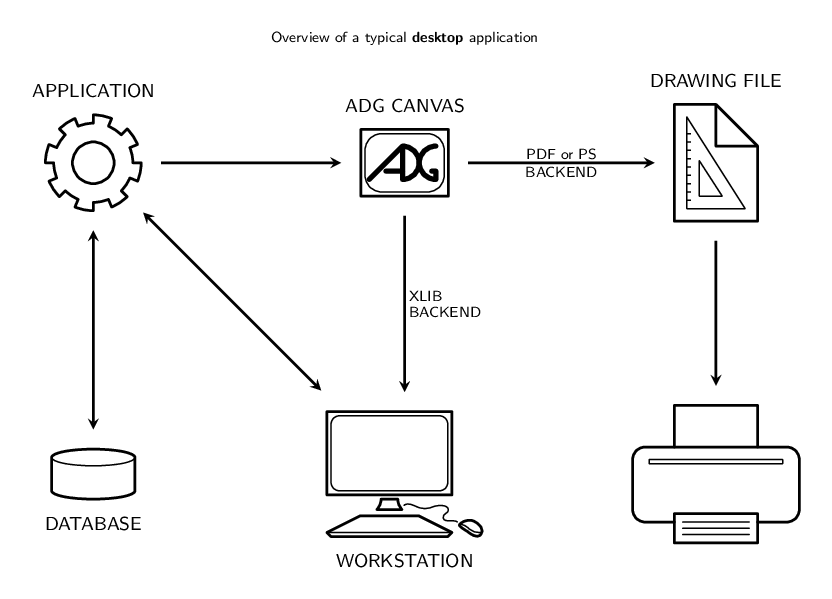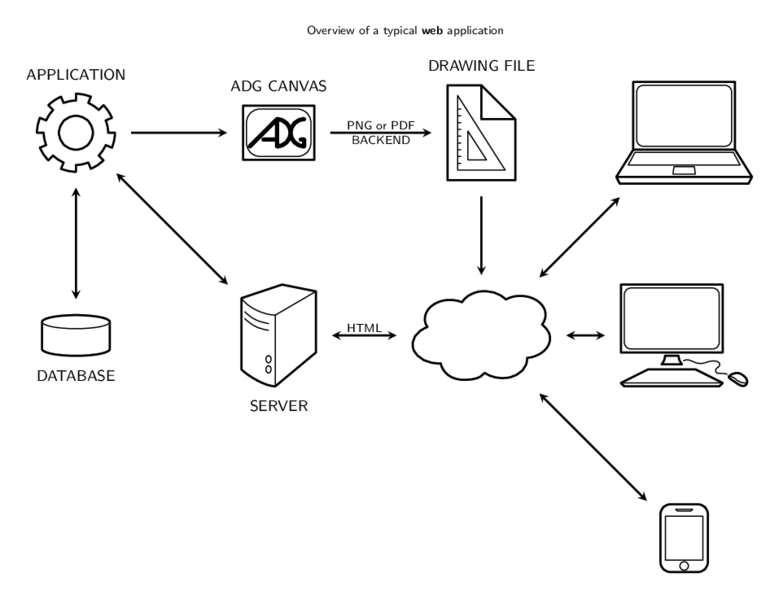In general, applications using the ADG library can be split in two main categories: desktop or web based. Desktop applications are better suited for enhanced user experience while web applications are stronger in data sharing and integration with already existing infrastructures.
Automatic drafting
Applications with embedded drawing generation

A typical desktop application does not involve traffic across networks and usually provides better user experience because of this speed gain. This kind of applications are easier to implement (do not have concurrent access to the data) and to deploy. On the other side, there is no data sharing so the equation one user : one PC : one program must be fulfilled. Furthermore, the software is usually bound to the platform used for development.

Web applications provide natural data sharing and multiplatform support. They are typically based on the technologies used for web development, such as LAMP platforms, so they are ready to be integrated with already existing web infrastructures.
A web application does not usually need to interact with real hardware so it tends to be more abstract than its desktop counterpart. It only has to generate web content, typically HTML, CSS and javascript files, and passes them to the web server.